Abstract
Malacinski, George (Indiana University, Bloomington), and Walter A. Konetzka. Bacterial oxidation of orthophosphite. J. Bacteriol. 91:578–582. 1966.—A variety of bacteria grown on a glucose and salts medium were capable of utilizing orthophosphite as a sole source of phosphorus. Two organisms, Pseudomonas fluorescens 195 and Serratia marcescens 24, were studied in detail. Growth rates and total cell yields of the bacteria grown on phosphite indicated that the bacteria utilized phosphite as efficiently as phosphate. The ability to oxidize the anion was shown to be inducible. A period of adaptation was required prior to growth on phosphite when phosphate-grown cells were transferred to a medium containing a limiting amount of phosphate and excess phosphite. No phosphite-oxidizing activity could be detected in whole cells or cell-free extracts of phosphate-grown cells. Both whole cells and cell-free extracts of phosphite-grown cells possessed phosphite-oxidizing activity.
Full text
PDF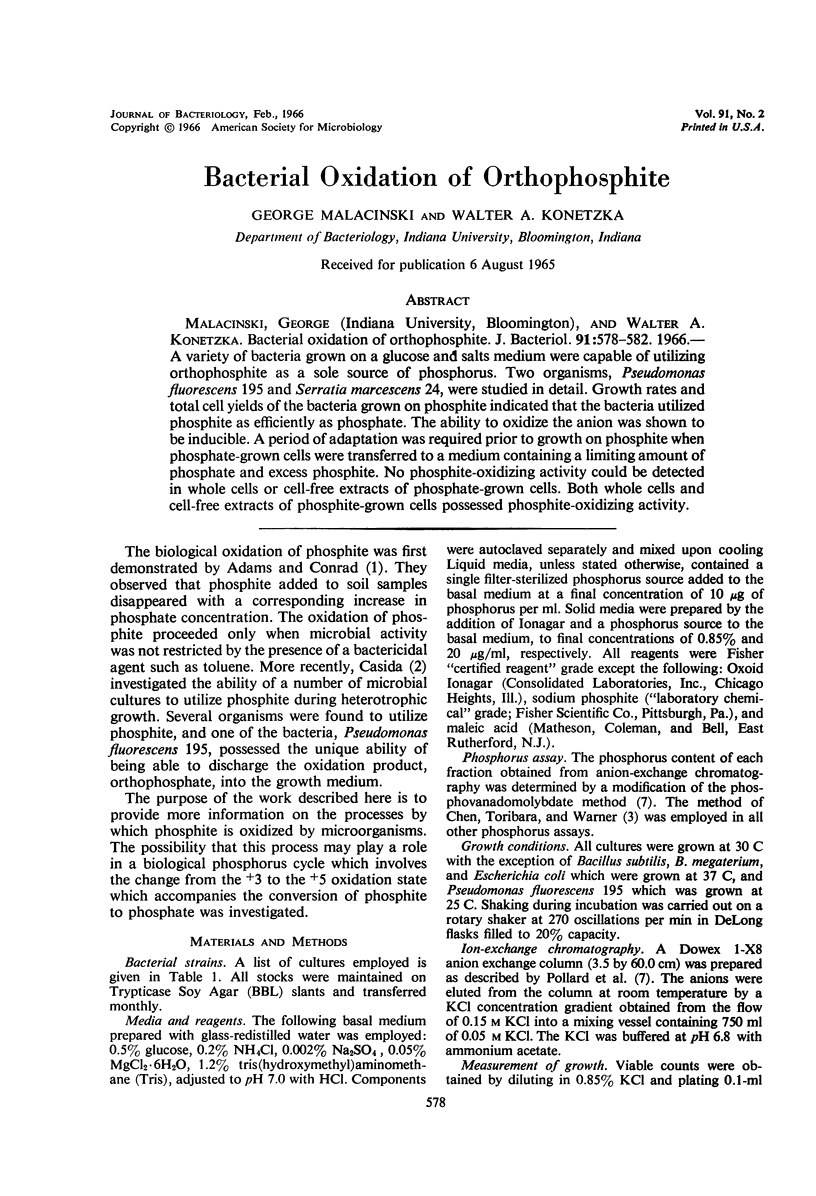
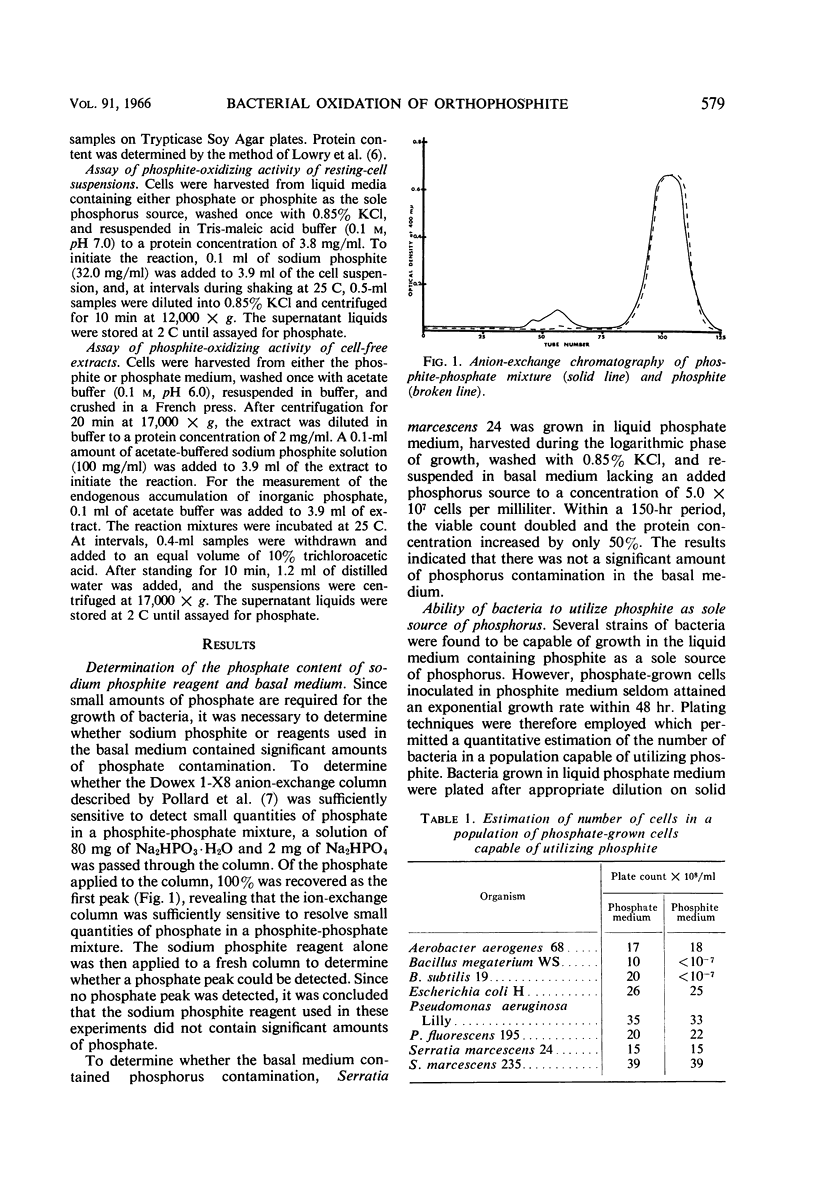
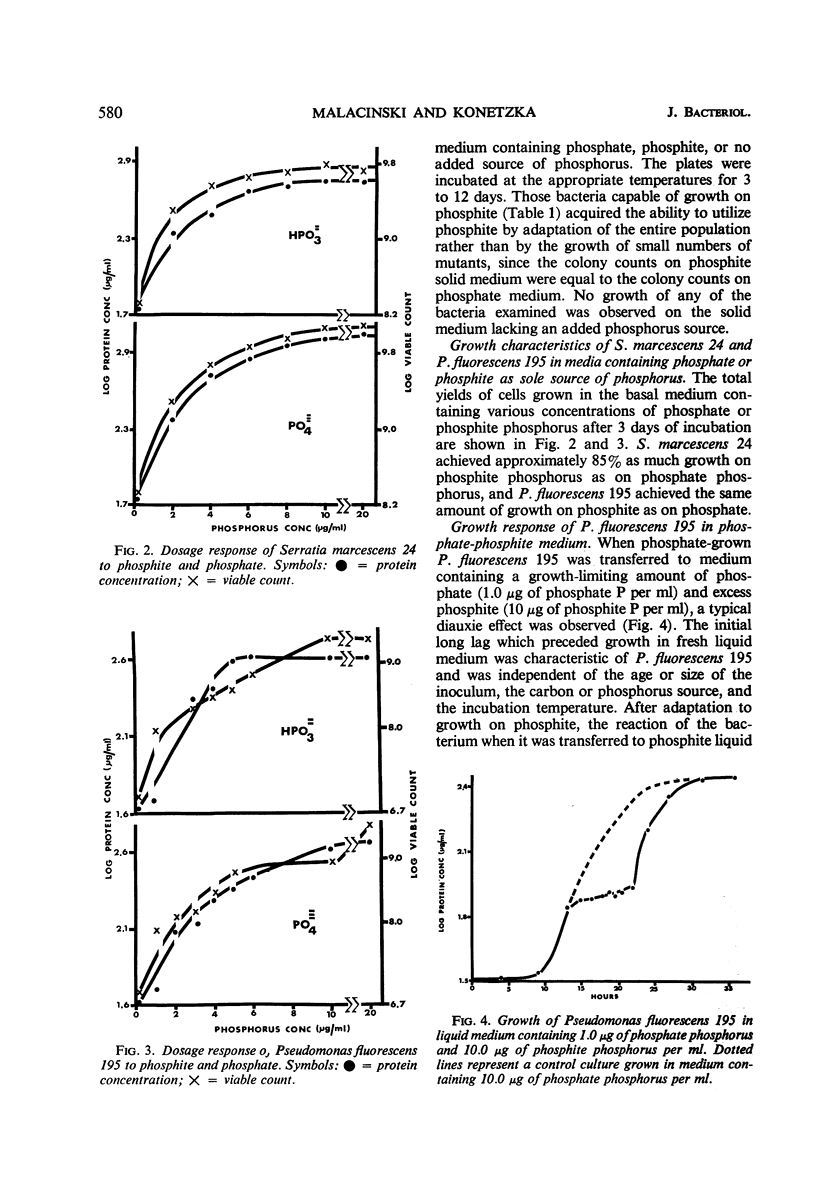
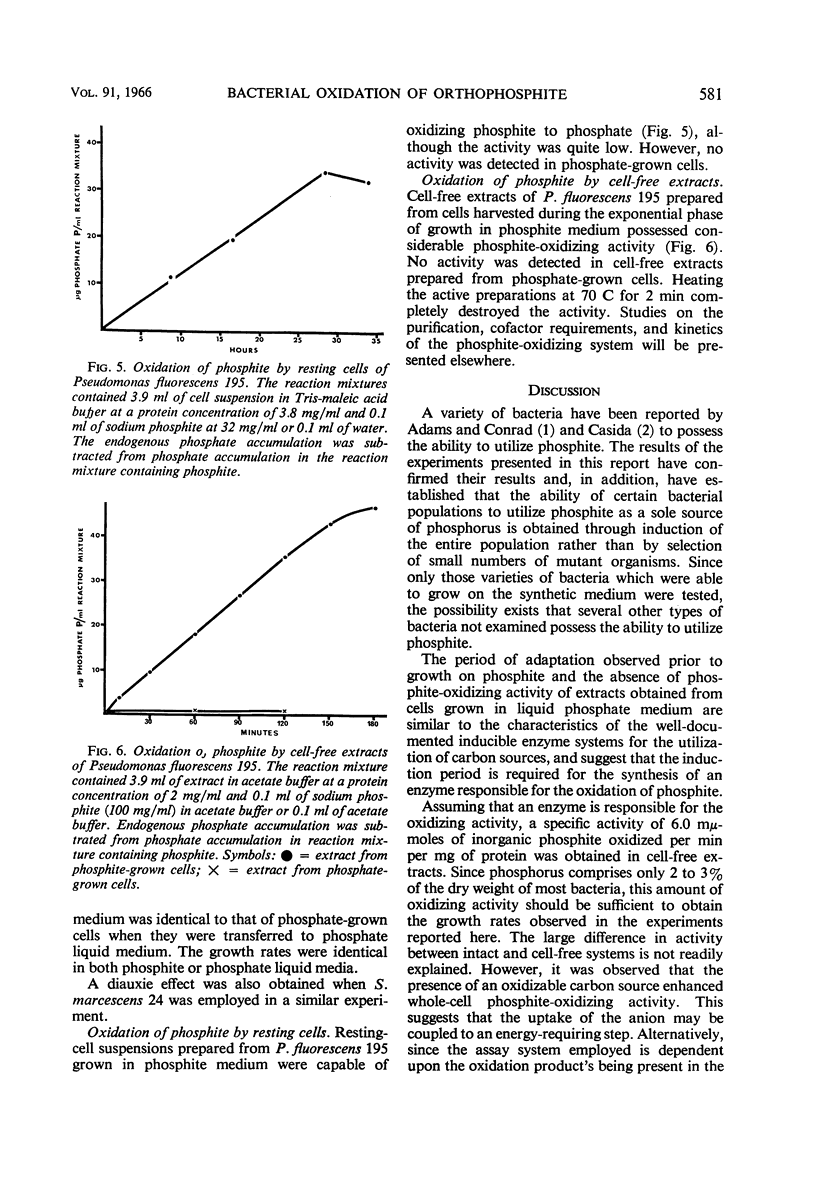
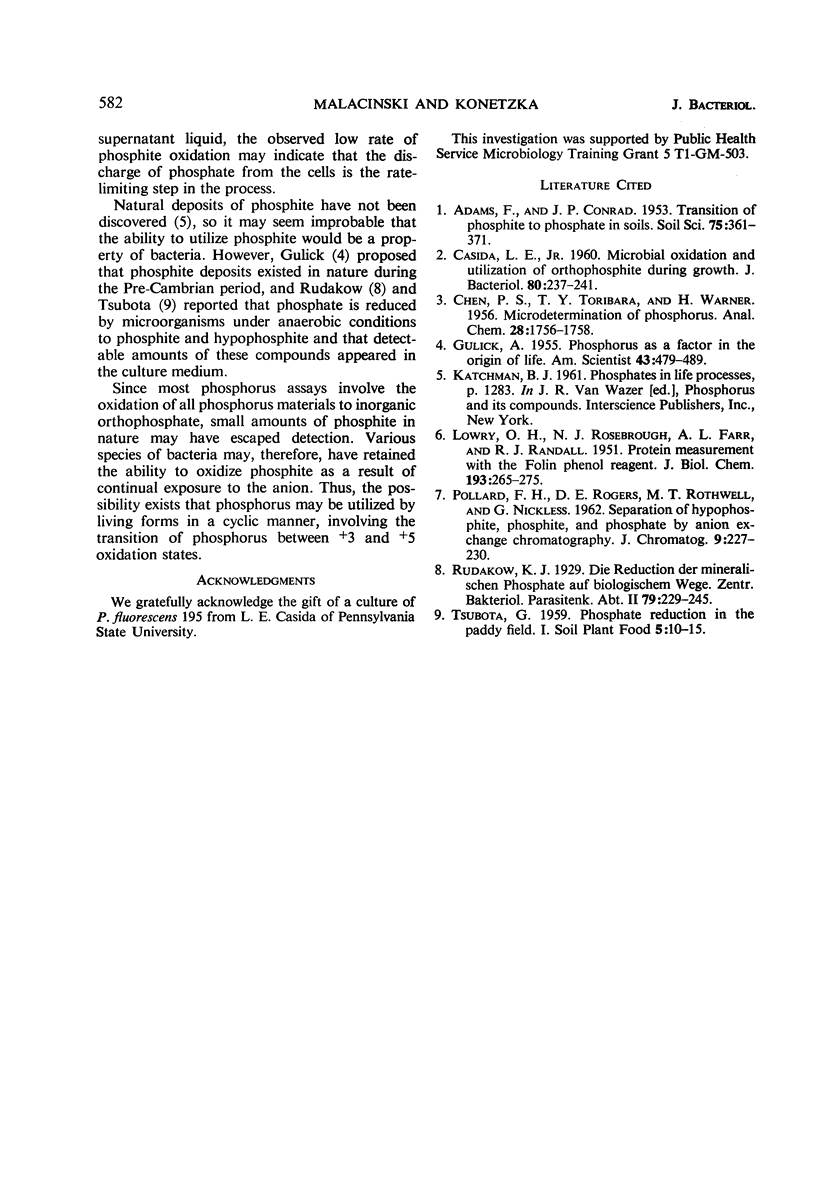
Selected References
These references are in PubMed. This may not be the complete list of references from this article.
- CASIDA L. E., Jr Microbial oxidation and utilization of orthophosphite during growth. J Bacteriol. 1960 Aug;80:237–241. doi: 10.1128/jb.80.2.237-241.1960. [DOI] [PMC free article] [PubMed] [Google Scholar]
- LOWRY O. H., ROSEBROUGH N. J., FARR A. L., RANDALL R. J. Protein measurement with the Folin phenol reagent. J Biol Chem. 1951 Nov;193(1):265–275. [PubMed] [Google Scholar]
- POLLARD F. H., ROGERS D. E., ROTHWELL M. T., NICKLESS G. Separation of hypophosphite, phosphite and phosphate by anion-exchange chromatography. J Chromatogr. 1962 Oct;9:227–230. doi: 10.1016/s0021-9673(00)80764-5. [DOI] [PubMed] [Google Scholar]


